Major Sport Mascots
MLB, NBA, NHL, NFL
Mascots, in general, are used to represent an organization, a company, or a sports team. They are usually colorful characters – in every sense of the word – and they serve as a ‘spokesperson’ of sorts for the organization. A good mascot should embody everything a sports team stands for.
Some companies, believe it or not, have their mascots. Sony’s mascot, for example, is a cute cat Toro Inoue and he’s a well-liked persona. Or Michelin’s tire man – Bibendum. However, sports teams are what we most often associate with mascots. Not only sports mascots are what we see more often, but they were also invented by sports teams. Companies adopted them after recognizing the marketing potential they have.
Origin of the Name
Mascots in sports teams are sometimes objects of superstition. Fans often believe that a mascot brings good luck to the team. This view of a mascot as a good luck charm is corroborated by the etymology, that is, the origin of the term ‘mascot’. The word is of French origin – ‘mascotte’, which literally means – lucky charm.
Mascots History
While mascots are now popular among a variety of organizations, sports teams were, in fact, the first who adopted them. It was the aim of the teams to entice people to buy tickets and come watch the games. However, it seems that, at first, mascots were a serious business.
At first, live animals were used. Some teams would bring real bears to the games. Luckily, this practice was abandoned, as these animals were often treated with cruelty and faced a very tiring life. Some of these animals weren’t even domesticated, and various (dangerous) incidents occurred. After that, teams would often resort just to having some sort of animal drawn and tacked onto their uniforms. Soon most wised up and began employing someone to get into a full-sized suit and actually interact with the fans on the field, but even today, most mascots are animal-themed.
Kids were also often employed, or at least, served as mascots. The first mention of something mascot-like can be found in The Dickson Baseball Dictionary. In 1880s, a boy called ‘Chick’ was considered a lucky charm by the fans – even though the was just a water boy. The New York Times was the first to use the word in its modern spelling; all earlier mentions went something like ‘mascotte’ or ‘mascott’. But none of these was a mascot in the modern sense of the word: that is, a person whose full-time job is to perform.
The first sports mascot that can be considered a professional is likely Max Patkin, the venerable Clown Prince of Baseball. He was a legitimate baseball player in the minor league, but he wasn’t costumed when rooting for his teams. He performed for more than five decades as his alter ego. The first costumed mascot – and today one of the most famous – was Mr. Met, New York Mets’ official mascot.
Mascots Today
Mascots are today very popular and all but very few teams have one, as least unofficially. Let’s not sugarcoat it – the goal has always been (and largely is today) to help the teams sell merchandise and popularize it. Emboldened by the success of the early mascots, pretty much every team has scrambled to create some kind of a mascot. Some are universally reviled, while some have been fan favorites for a long time.
The existence of the National Mascot Hall of Fame only shows the extent of the popularity of the mascots. Today most organizations dealing with the public have some sort of a mascot. Mascots are also created for one-time significant events, such as the Olympics or the Soccer World Cup.
Mascots aren’t only about entertainment nowadays, though. Most of the mascots today do a lot of work off the pitch. They often do charity appearances and visit hospitals, for example. Some teams make extra money by charging for birthday or company event appearances. But that doesn’t have to be bad. After all, mascots are the ambassadors for the team.
Mascots are a huge business these days, but it appears the fans don’t mind. They like the (staged) quarrels between mascots and sometimes their implausible origin stories – and why not; it’s all good fun.
MOST POPULAR MASCOTS
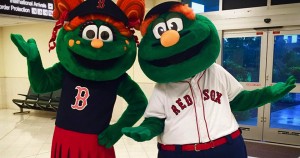
Tessie & Wally – Boston Red Sox
Read More
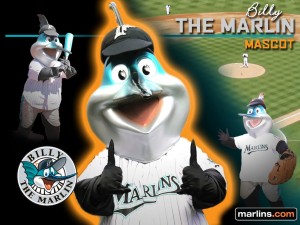
Billy the Marlin – Miami Marlins
Read More
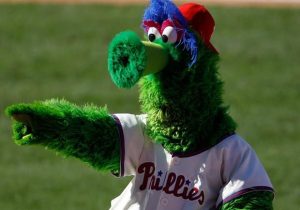
Philie Phanatic – Philadelphia Phillies
Read More
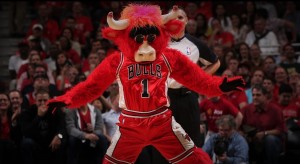
Benny the Bull – Chicago Bulls
Read More
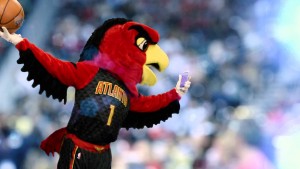
Harry the Hawk – Atlanta Hawks
Read More
Working as a Mascot?
Getting a job as a mascot could be easier than you think. Minor league teams often look for someone to fill the costume (literally), however, the pros take the whole deal seriously. All the stunts that the mascots must do demand a lot of athletic prowess.
The costumes are also very heavy. Some mascots have reported that they sweat out so much that they lose over 10 pounds per single game! If that’s not dedication, then we don’t know what is.
The sheer number of appearances they must do is also staggering, in some cases over 1000 per year. That’s a lot of traveling and a lot of overtime. A man behind the mask really needs to be extremely dedicated to his team; the job is not for the faint of heart, and the salaries don’t make up for much. The range is very wide, but not many earn over $100,000 a year. A paltry sum for so much work!
Think from time to time about the folks inside the masks. They do their best to provide a glimpse of the fantasy world that adults often cannot experience anymore – except when watching the game on the field! That has to be worth something.
